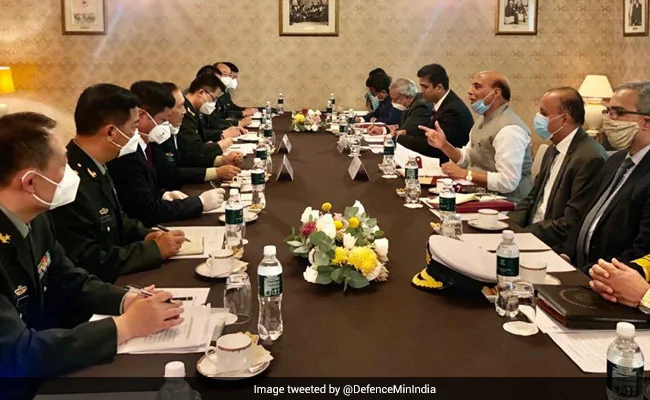
SOURCE: NDTV
India is “entirely” responsible for the border stand-off in Ladakh and China will not lose “an inch of its territory”, the Chinese government claimed Saturday morning, blaming India for escalating tension along the LAC (Line of Actual Control), which serves as the de factor border between the two countries.
India responded shortly after, with the Defence Ministry noting that China’s actions, including the “amassing of large number of troops… aggressive behaviour and attempts to unilaterally alter the status quo”, were in violation of bilateral agreements.
“Causes and truth of the current tension on the China-India border are clear, and the responsibility entirely lies with India. China cannot lose an inch of its territory, and its armed forces are fully determined, capable and confident in safeguarding national sovereignty and territorial integrity,” the Chinese said in their statement.
China also called on India to “earnestly implement important consensus reached by President Xi Jinping and Prime Minister Narendra Modi and insist on resolving the issue through dialogue and consultation”
The Defence Ministry responded saying that India too was “determined to protect (its) sovereignty and territorial integrity”, but urged China against further escalation and said it was keen for China to “work with the Indian side for complete disengagement at the earliest…”
“The two sides should continue their discussions, including through diplomatic and military channels, to ensure complete disengagement and de-escalation and full restoration of peace and tranquillity along the LAC at the earliest,” the ministry said.
RM advised that it was important therefore that Chinese side should work with the Indian side for complete disengagement at the earliest from all friction areas including Pangong Lake as well as de-escalation in border areas in accordance with the bilateral agreements & protocols
The twin statements came hours after a high-level meeting in Moscow between Defence Minister Rajnath Singh and his counterpart, Defence Minister Wei Fenghi – a meeting asked for by China and the first of its kind since the border row erupted in June with the killing of 20 Indian soldiers.
In a pointed message before his meeting with the Chinese defence minister – on the sidelines of a regional summit on security and defence issues – Rajnath Singh said peace and security demanded a climate of trust, non-aggression and respect for international rules.
The Indian Army this week said it had blocked Chinese troops carrying out “provocative military movements” in the Pangong Tso Lake region of Ladakh. The Army described these movements as the most serious since June.
hat attempt was made even as the two nations are engaged in diplomatic and military talks – which have, so far, done little to resolve the border row.
In statements traded last week – before the “provocative military movements” – China said it wanted differences with India to be sorted out peacefully. However, after several rounds of military and diplomatic meetings, only limited disengagement has occurred.
Tensions at the border are now at some of the highest levels since the 1962 war, with China ordering a major build-up of tanks and infantry in the South Pangong region of eastern Ladakh.
India has reinforced its own tank formations in the area and deployed additional forces to shore up the heights that it holds along the disputed Line of Actual Control (LAC) in the region.
There has also been heavy air activity along the LAC, with the Chinese Air Force stepping up fighter deployment from Ngari-Gunsa and Hotan air bases in Tibet.
Army Chief General MM Naravane has described the situation along the LAC as “tense”, but also that it could “resolved fully through talks”.
Earlier this week Chief of Defence Staff General Bipin Rawat said that despite the threat of coordinated action along the northern and western fronts – an allusion to a joint Pakistan and China threat – India’s armed forces were capable of responding in “best suitable ways”.






